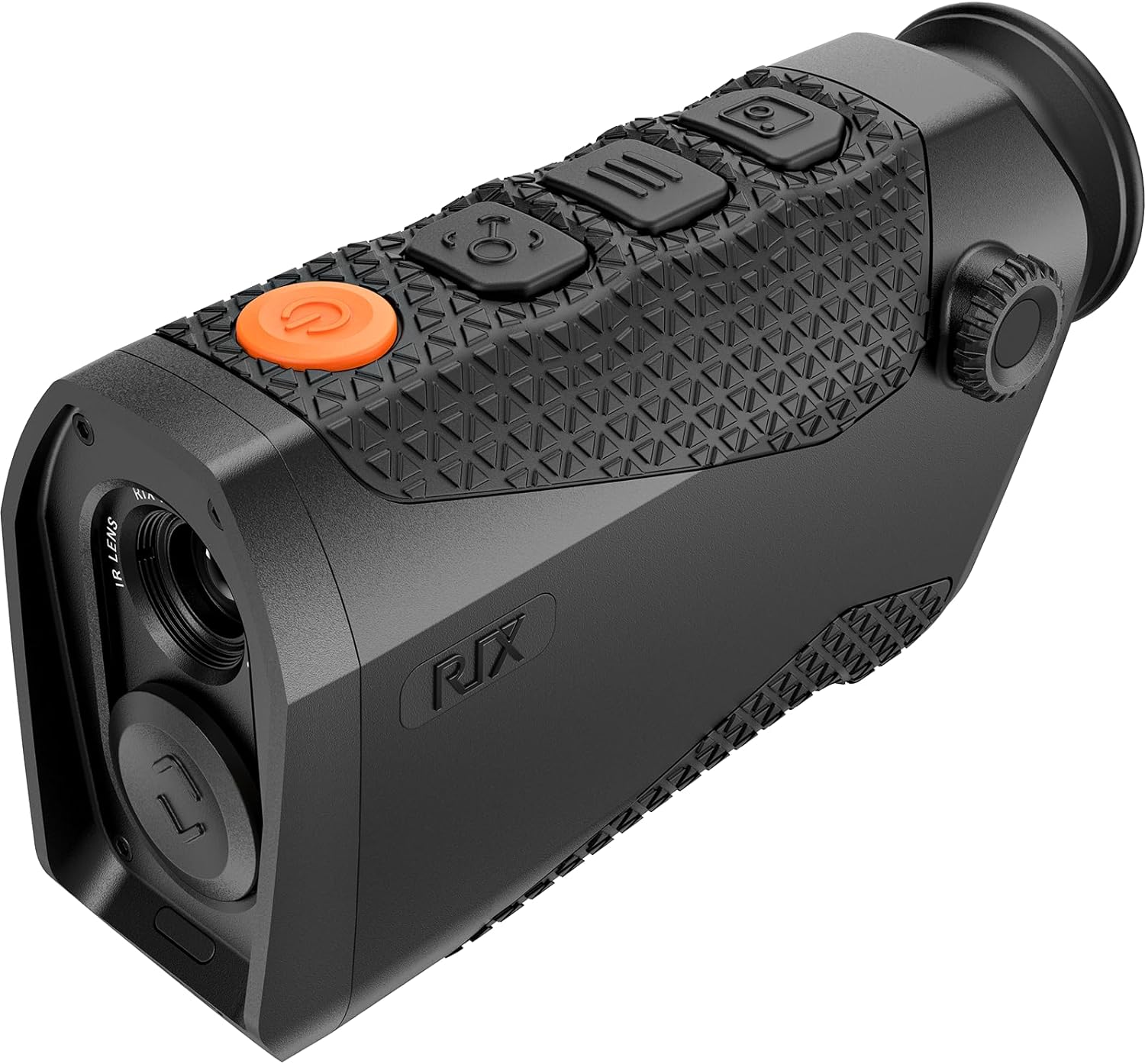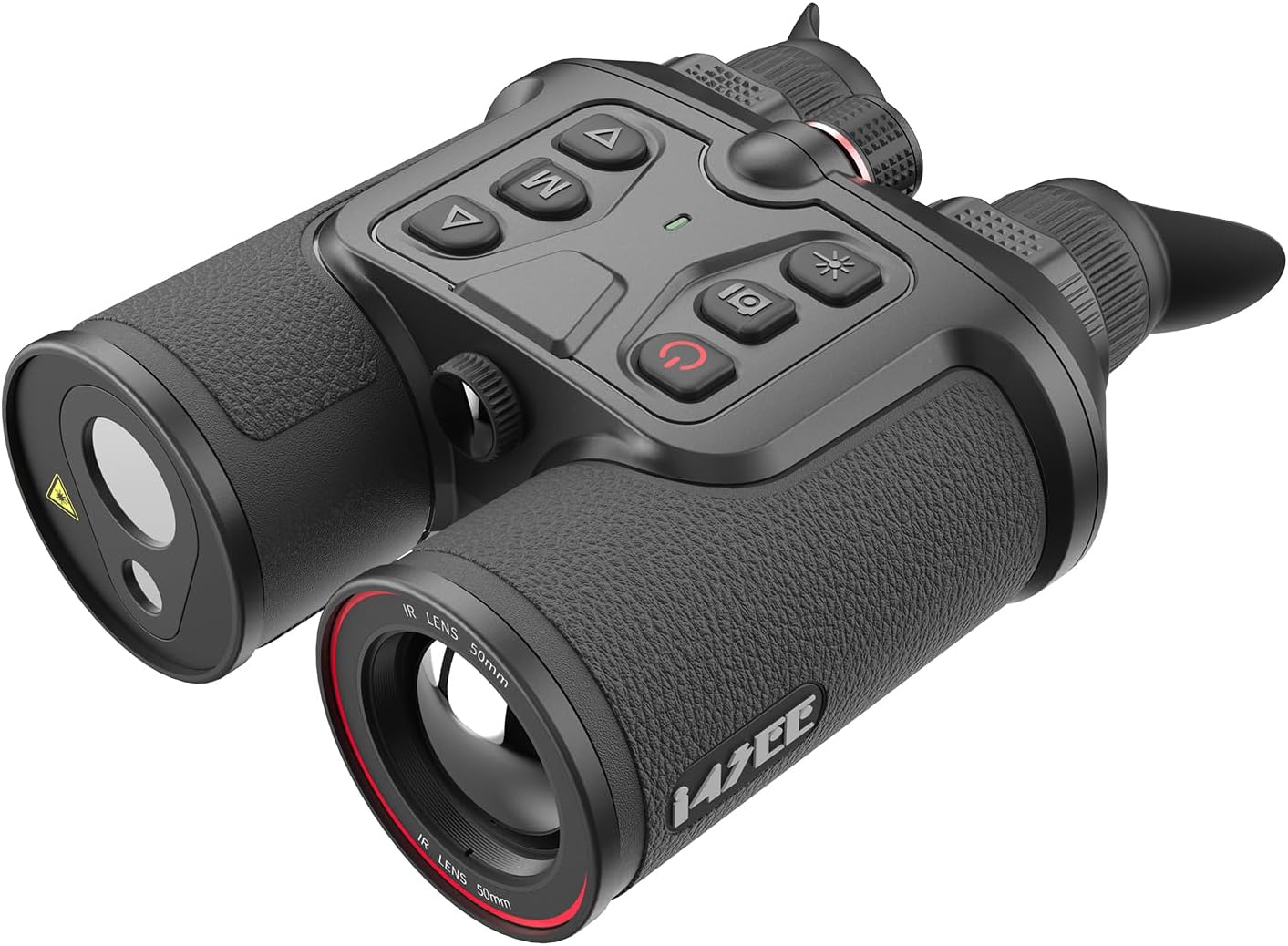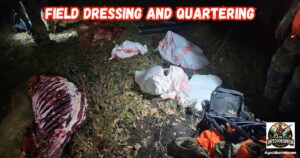Contents
- 1 Why Night Vision Binoculars Matter for Nocturnal Hunting
- 2 Choosing Night Vision Binoculars: What to Look For
- 3 Using Night Vision Binoculars Effectively for Nocturnal Hunts
- 4 Common Challenges When Using Night Vision Binoculars
- 5 Examples of Night Vision Binoculars for Nocturnal Hunting
- 6 Legal Issues and Responsible Use
- 7 Frequently Asked Questions
- 8 Final Thoughts on Night Vision Binoculars
Night vision binoculars truly change the experience of nocturnal hunting. Being able to observe animals in low light or complete darkness opens up new opportunities for hunters who are interested in tracking or studying wildlife at night.
QUICK LOOK: What to Look for in Night Vision Binoculars
- Optical Range and Magnification: Different binoculars let you see at different distances and with varying clarity. Some excel in short, brushy areas, while others scan open fields over long distances.
- Thermal vs. Digital Night Vision: Thermal binoculars display animals’ heat signatures, making them easier to spot at a distance, through light brush, or even in fog. Digital night vision uses starlight or an IR illuminator and provides more detailed images up close, but can be limited in certain weather conditions.
- Battery Life: Most hunts go on for several hours, so I always focus on battery performance. Some models last only a couple of hours, while others can operate most of the night on a single charge or with replaceable batteries.
- Weather Resistance: Since hunting often happens in less-than-perfect weather, waterproof or at least water-resistant models are a priority for me.
- Ergonomics and Weight: Comfort is key during long glassing sessions. Lighter binoculars with easy grips and comfortable straps make it easier if you expect to hold them up for a long time.
- Recording and Streaming Options: Some models come with built-in video or photo features. I like these for reviewing animal movements or sharing cool moments with fellow hunters after the trip.
If you’re considering using these devices for hunting, it’s essential to sort through the choices and understand which features matter most, as well as learn about the rules that might apply in your area. In this article, I’ll walk you through the key gear, some practical advice, and tips to help you get the most from your night vision binoculars.
Why Night Vision Binoculars Matter for Nocturnal Hunting
For hunters, the ability to see in the dark is incredibly useful. Night vision binoculars work by amplifying available light or detecting heat signatures, letting me spot animals such as coyotes, wild boar, or deer that are most active at night.
This gives a boost to scouting, tracking, or simply observing animal behavior. Unlike regular daytime optics, these binoculars allow you to see well beyond sunset and during the prime nighttime activity hours for many animals. Night vision binoculars have increased in popularity, partly because digital and thermal technology keeps getting better.
In some areas, more and more hunters are adding these devices to their gear, not just for hunting but also for wildlife observation and monitoring land. While these binoculars aren’t always the go-to option for shooting due to their size and field of view, they’re great for identifying targets, counting antler points, or confirming animals before bringing out traditional optics for the shot.
Choosing Night Vision Binoculars: What to Look For
Selecting the right binoculars means understanding the technology and matching it with your style of hunting. The options vary in price and features, so here are the main factors I recommend focusing on:
- Optical Range and Magnification: Different binoculars let you see at different distances and with varying clarity. Some excel in short, brushy areas, while others scan open fields over long distances.
- Thermal vs. Digital Night Vision: Thermal binoculars display animals’ heat signatures, making them easier to spot at a distance, through light brush, or even in fog. Digital night vision uses starlight or an IR illuminator and provides more detailed images up close, but can be limited in certain weather conditions.
- Battery Life: Most hunts go on for several hours, so I always focus on battery performance. Some models last only a couple of hours, while others can operate most of the night on a single charge or with replaceable batteries.
- Weather Resistance: Since hunting often happens in less-than-perfect weather, waterproof or at least water-resistant models are a priority for me.
- Ergonomics and Weight: Comfort is key during long glassing sessions. Lighter binoculars with easy grips and comfortable straps make it easier if you expect to hold them up for a long time.
- Recording and Streaming Options: Some models come with built-in video or photo features. I like these for reviewing animal movements or sharing cool moments with fellow hunters after the trip.
Using Night Vision Binoculars Effectively for Nocturnal Hunts
Night vision isn’t only about seeing in darkness—it’s about making better decisions in the field. I primarily depend on these binoculars for scouting and observation instead of active shooting. Here’s how I make the most of their advantages during a typical night out:
- Scouting Locations: Before setting up, I scan the land from a distance. Thermal models help me spot heat signatures, even when animals are tucked behind tree trunks or thick grass.
- Identifying Game: Digital night vision is better for checking out the details—like confirming antler points, behavioral clues, or distinguishing between legal and protected species without alerting the animals.
- Tracking After Dark: When tracking game after a shot, night vision binoculars help me pick up trails and eyeshine far ahead, making post-shot recovery safer and more efficient.
- Moving Safely: Having a clear, amplified view of the surroundings helps me avoid obstacles and hazards as I move through the dark.
Common Challenges When Using Night Vision Binoculars
While night vision binoculars bring a lot of advantages, I’ve faced a few surprises, especially as a new user. Getting ahead of these challenges makes for a smoother hunt.
- Short Battery Life: Basic or entry-level digital models often go through batteries quickly, especially in winter. Bringing spare batteries or a portable power pack saves the night more than once.
- Image Clarity: Thermal models aren’t known for sharp details. They’re excellent at spotting heat, but it can take a while to get used to reading animal shapes or telling species apart, particularly in cluttered scenes.
- Weight and Bulk: Some high-end thermal units can be heavier than regular binoculars. Using a neck strap or chest harness is a game-changer for comfort if you plan to glass for hours.
- Legal Restrictions: Rules about night vision for hunting change widely. Breaking them can lead to big fines or revoked hunting licenses. I always look up the latest regulations straight from the game and fish department; sometimes they change seasonally, so it pays to keep an eye out.
Thermal vs Digital Night Vision: Making the Right Choice
The decision between thermal and digital night vision depends on what you hunt, where, and how much you want to spend. For scanning big open fields or finding animals hidden in grass, I use thermal. For sizing up deer racks or getting a close look at animal behavior, digital night vision wins.
Some companies now put out models that blend both thermal and digital features—handy if you want the flexibility to scan with thermal and then get a sharp ID using digital. These blended models can cost more, but they offer serious versatility for hunters who target a range of species and habitats.
Examples of Night Vision Binoculars for Nocturnal Hunting
I’ve tested several options over the years. Here are four that are often suggested by other hunters and have performed well in real field conditions:

Pulsar Merger LRF XT50 Thermal Binoculars:
These feature a wide field of view and long detection range, which is ideal for scanning open land. They come with a higher price tag but are favored by those serious about predator or hog control in big fields.

RIX Pocket K3 Portable Thermal Monocular
By mixing thermal and digital night vision, this unit gives a sharp OLED view. It’s useful for detecting animals at a distance and then switching to confirm what you’ve found.

ATN BinoX 4K 4-16x Smart Day/Night:
A digital option that packs in a powerful infrared illuminator, built-in rangefinder, and HD video recording. It’s a good choice for those who want extra tech in the field, including sharing footage after the hunt.

i4SEE Thermal Binoculars for Hunting:
Thermal Imaging Binoculars feature a 640×480 resolution sensor with a pixel pitch of 12μm, delivering crisp thermal imaging under all lighting conditions.
Your final choice depends mostly on your budget, your preferred species, and the settings where you hunt most often. I always recommend reading reviews and, if possible, testing a few models to get a feel for them before buying.
Legal Issues and Responsible Use
This topic can’t be overlooked. In many locations, using night vision or thermal optics is regulated or prohibited, especially when paired with a firearm. These rules help keep hunting fair and support responsible harvests.
I strongly advise checking with your local wildlife agency for the most current guidance. In some areas, night vision is allowed only for specific nuisance animals such as coyotes or hogs, while in others, electronic optics are restricted for all hunting.
Being a responsible user means knowing the local position, targeting only allowed species with night vision, and avoiding the use of these devices for aiming or shooting if it’s not permitted. Always double-check the latest info before heading out at night.
Frequently Asked Questions
Can I legally hunt at night with night vision binoculars?
The answer comes down to your location. Some regions allow night hunting for select species, while others ban any use of electronic optics for hunting. It’s best to get the facts from your state or country’s wildlife agency before bringing any night vision gear into the field.
How far can I see using night vision binoculars?
It depends on the type and quality. Some thermal units spot heat signatures out past 1,000 yards. Digital units typically offer a clear look at close to mid-range, especially with a strong infrared illuminator, but may not perform well at longer ranges.
Are digital or thermal binoculars better for hunting?
Thermal binoculars excel at quick spotting, especially through brush or at long range. Digital night vision stands out for clearer ID at close distances. Picking the right type depends on your hunting style and whether you prize fast detection or positive animal ID more.
Final Thoughts on Night Vision Binoculars
Choosing the right night vision binoculars really opens up new ways to enjoy nocturnal hunting. With careful research and obedience to the rules, night vision gear gives a boost not only to hunting success but also to safety and enjoyment at night. Taking the time to get familiar with your equipment and the laws in your area helps make every night hunt safer and more rewarding.
As always, stay safe, enjoy the journey, and please try to leave it cleaner than you found it. If you have any comments, questions, ideas, or suggestions, please leave them in the comment section below, and I’ll get back to you ASAP. You can follow us on YouTube: Man Art Creations for videos of our DIY Adventures.
Most Recent Articles:
- Complete Guide On Tracking Game Animals

- DIY 4-Step Guide To Field Dressing And Quartering A Deer

- Night Vision Binoculars For Nocturnal Hunting

- The Science Behind Camouflage Patterns For Deer Hunting

- Binocular Accessories For Hunters

- 9 Tips for Using Trail Cameras To Track Deer Movements

P.S. Thanks so much for checking out our blog; we really appreciate it. Just so you know, we may receive a commission if you click on some of the links that appear on our site. This helps us keep our content free and up-to-date for everyone. We appreciate your support!



